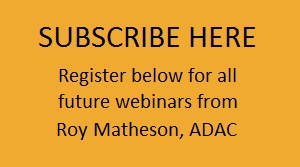I have an applicant for a janitorial job who has extensive spine injuries. He is requesting that the employer provide a back belt upon hire for wearing at work. There is NIOSH research that shows that back belts are not proven to help prevent back injuries. No other person in our facility wear back belts. Do we provide the requested item even though we do not think it will help…?????
In my August 19, 2015 blog, I answered the initial points raised by this question. Let’s set the stage for further discussion. We are sitting in an application interview, the applicant has made a request for an accommodation, and a mental red flag has been raised about the use of a back support belt to overcome his history of spine injuries.
The next two steps available to the interviewer involve one that can be used but that you may wish to avoid. That has to do with your option to request that the applicant demonstrate how he would perform certain elements of the job. Although you may not typically make this request of everyone you interview for this position, the foundation for asking was laid when the applicant self-disclosed his history.
Section 12112 (d) (2) Pre-employment. –
- Prohibited examination or inquiry. – Except as provided in paragraph (3), a covered entity shall not conduct a medical examination or make inquiries of a job applicant as to whether such applicant is an individual with a disability or as to the nature or severity of such disability.
- Acceptable inquiry. – A covered entity may make pre-employment inquiries into the ability of an applicant to perform job-related functions.
Keep in mind that there actually is no such thing as a pre-employment medical examination allowed under the law. This reference to “Pre-employment” applies to the application phase of employment, not the conditional hire phase. Actual testing of the individual is not allowed in the application phase.
When requesting that an applicant demonstrate how he would perform an element of a job, you must know the essential functions and physical demands of the job. In this case let’s say that emptying trash cans is the task representing the highest level of physical demand (bending to 20 inches to grasp the handle of the container, lifting the container weighing 35 pounds to 50 inches, then emptying the container into a larger container by twisting and bending).
If you choose to have the person demonstrate how he would safely perform this task, escort him to the appropriate equipment and ask him to proceed with the demonstration. You may want to preface the request by saying something like, “I am concerned about your history of back injuries and want you to be sure you are confident and aware of what this job demands. If I can arrange for you to experience the heaviest physical demand of the job, for which you are applying, would you be interested in seeing what is required?”
The focus should be on your concern for his safety given his self-expressed challenge. The idea is simply to let him experience what it takes to do the job; you are not going to screen him out of the job if he refuses the demonstration. If he insists on you providing him with a brace, you may want to respond with, “A back brace or back support belt is a personal device. Let’s not take the next step here until you arrange to borrow or buy a device that suits your needs. Otherwise, we will put your application on hold until you feel like you are safe to proceed with the application and hiring process.”
Remember to document this conversation in your reasonable accommodation tracking system.
If the demonstration does not convince the individual to withdraw his application you have to proceed to the conditional hire phase of employment. You enter this phase when the applicant has demonstrated that he is qualified for the job and after you tender a valid offer of employment.
The next step in this process takes place during the conditional hire phase of employment. We will conclude this three part series in my next blog post.
Did you miss part I of ADA Guidelines: Job Applicants and Reasonable Accommodation? Find it here.
Keep in mind that my webinars are intended to be part of the ongoing discussion about how to successfully accommodate individuals with disabilities; they are not intended as legal counseling.



